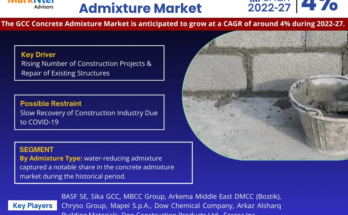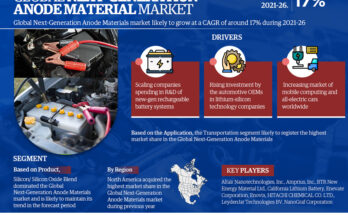Global Cast Polymer Market has valued at USD11.56 billion in 2022 and is anticipated to project robust growth in the forecast period with a CAGR of 5.38% through 2028. The manufacture, distribution, and use of cast polymer materials are all part of the global sector known as the cast polymers market. Cast polymers are a class of synthetic materials created using the casting method, which involves pouring liquid resin into molds and letting it set up in a predetermined shape. This process allows for the production of various products such as countertops, vanity tops, bathtubs, shower pans, and other bathroom and kitchen fixtures. These materials are also widely employed in the building and construction industry due to their durability, adaptability, and aesthetic appeal.
Cast polymer product producers, suppliers, distributors, and end consumers are all key players in this market. The market encompasses the manufacturing of finished products as well as the production of raw ingredients including polyester resins, acrylic resins, fillers, pigments, and additives. The cast polymers market is expected to witness growth due to advancements in manufacturing technology, increasing construction activity worldwide, and rising demand for visually pleasing and low-maintenance building materials.
Various factors influence the market, including customer preferences, environmental restrictions, and economic situations. The construction and building sector, in particular, extensively utilizes cast polymers. Solid surface materials, like cast polymers, are commonly used to create countertops and vanity tops for both residential and commercial settings. These materials offer a smooth, visually attractive, and moisture-resistant surface that is also resistant to stains and scratches. Shower pans, wall surrounds, and bathtubs are often made of cast polymers, providing a durable and easy-to-clean surface with options for personalized designs and colors.
Cast polymer materials such as terrazzo and engineered stone are utilized for flooring applications, offering a long-lasting, low-maintenance, and aesthetically pleasing choice for residential, commercial, and institutional buildings. With the increasing number of building and infrastructure development projects fueled by urbanization and rising world population, cast polymer materials are in high demand in the construction industry. Compared to genuine stone materials like granite and marble, cast polymers provide several advantages. They are more cost-effective, lighter, and easier to shape into desired forms.
Furthermore, cast polymers offer a wide range of design options, including various colors and patterns, attracting customers, and driving market expansion. The design versatility and customization choices offered by cast polymers allow customers to create unique and visually appealing products. The ability to replicate the appearance of genuine stone while providing a more consistent and uniform surface is a significant market driver, particularly in the development of residential and commercial spaces.
Key Market Driver
Growing Demand of Cast Polymer in Construction Industry
The construction industry has been experiencing a remarkable growth in recent years, driven by various factors. One of the key drivers is the increasing demand for cast polymer materials, also known as solid surface materials. These composite materials have found widespread use in the construction industry, serving a multitude of applications such as countertops, vanities, bathtubs, and shower enclosures.
Download FREE Sample Report @ https://www.techsciresearch.com/sample-report.aspx?cid=2587
What makes cast polymer materials highly desirable in construction applications are their superior properties. These materials are known for their exceptional durability, offering resistance against stains, scratches, and chemicals. Additionally, they require minimal maintenance, making them an ideal choice for busy environments. Furthermore, cast polymer materials come in a wide array of colors and patterns, allowing for endless customization options and design versatility.
In the construction industry, aesthetics plays a crucial role in attracting customers and enhancing the overall appeal of a building or space. Cast polymer materials provide designers and architects with a myriad of options to create visually captivating structures. With their ability to mimic the appearance of natural stone such as marble and granite, cast polymer materials offer a cost-effective alternative without compromising on aesthetic appeal.
Another driving factor behind the growing demand for cast polymer in the construction industry is its cost-effectiveness. When compared to natural stone or other traditional materials, cast polymer materials are more affordable, making them an attractive choice for both residential and commercial projects. Moreover, the ease of installation and low maintenance requirements of cast polymer materials further contribute to their cost-effectiveness.
Sustainability is a significant concern in the construction industry and cast polymer materials align with environmental goals. These materials can be manufactured using recycled or renewable resources, reducing the strain on natural resources. Additionally, their long lifespan and low maintenance needs contribute to a reduced environmental impact, making them a sustainable choice for construction projects.
The construction industry is witnessing rapid growth globally, particularly in emerging economies. Factors such as increased urbanization, population growth, and infrastructure development are driving the demand for housing and commercial buildings. Cast polymer materials, with their versatility and suitability for a range of construction applications, are becoming the preferred choice for builders and developers.
In conclusion, the growing demand for cast polymer in the construction industry is acting as a significant driver for the global cast polymer market. The superior properties, aesthetic appeal, cost-effectiveness, sustainability, and the booming construction sector all contribute to the increased usage of cast polymer materials. As the construction industry continues to grow, it is expected that the demand for cast polymer will continue to rise, further propelling the global cast polymer market.
Surge in Technological Advancements
One of the significant technological advancements impacting the cast polymer market is the automation of manufacturing techniques. This automation has revolutionized the production processes of manufacturers, leading to enhanced efficiency and quality. By streamlining and automating various stages of the manufacturing process, such as mixing, casting, and curing, manufacturers can achieve precise control over the entire process. This not only ensures consistent product quality but also reduces the risk of errors or defects, resulting in superior cast polymer materials.
Moreover, the integration of automation in manufacturing techniques has brought about other benefits as well. For instance, it has significantly reduced the production time required for each cast polymer product. With automated systems, manufacturers can produce a larger volume of high-quality cast polymer materials in a shorter period of time, meeting the increasing demands of various industries.
In addition to automation, technological advancements have facilitated the development of innovative cast polymer products. Manufacturers are continually investing in research and development to create unique and high-performance cast polymer materials that cater to the specific needs of different applications. These innovations include improved durability, enhanced resistance to stains and chemicals, and superior design flexibility. By introducing these innovative products to the market, manufacturers can meet the evolving demands of customers and provide solutions that offer both functional and aesthetic benefits.
Furthermore, the integration of new technologies has played a crucial role in driving the growth of the cast polymer market. Manufacturers are increasingly adopting advanced technologies to enhance their production capabilities and improve the overall performance of cast polymer materials. For example, the use of nanotechnology in cast polymer materials allows for the creation of materials with enhanced properties, such as increased strength, improved resistance to wear and tear, and even self-healing capabilities. Additionally, the integration of smart technologies, such as embedded sensors and IoT connectivity, opens up new possibilities for monitoring and maintaining cast polymer products in real-time, ensuring their optimal performance throughout their lifespan.
Technological advancements have also contributed to the adoption of sustainable manufacturing practices in the cast polymer industry. As environmental concerns continue to grow, manufacturers are increasingly focusing on reducing their environmental footprint. They are implementing energy-efficient production processes, utilizing recycled materials, and minimizing waste generation. Technological advancements have enabled the development of eco-friendly resins and binders, further enhancing the sustainability profile of cast polymer materials. As sustainability continues to be a critical consideration for consumers and businesses, the demand for environmentally friendly cast polymer products is expected to grow significantly.
In conclusion, the surge in technological advancements is driving the global cast polymer market to new heights. The automation of manufacturing techniques, innovative product development, integration of new technologies, and sustainable manufacturing practices are all contributing to the increased adoption of cast polymer materials across various industries. As technology continues to advance, the cast polymer market is poised for further growth, providing ample opportunities for manufacturers to meet the evolving needs of the construction industry and other sectors that rely on cast polymer materials.
Key Market Challenges
Variation in Prices of Raw Materials
The prices of raw materials used in the cast polymer industry are often influenced by global commodity markets. Factors such as supply and demand dynamics, geopolitical tensions, natural disasters, and economic conditions can lead to significant price volatility. For example, fluctuations in oil prices directly impact the cost of resin production, which is a major component in cast polymer manufacturing. Such volatility makes it challenging for manufacturers to accurately predict and manage their production costs, leading to potential financial risks.
Many cast polymer manufacturers rely on imported raw materials to meet their production needs. This dependence exposes them to additional challenges related to foreign exchange rates, trade policies, and transportation costs. Currency exchange rates can affect the landed cost of imported raw materials, making it difficult for manufacturers to maintain consistent pricing and profitability. Trade policies, such as tariffs or restrictions, can also disrupt the supply chain and increase costs for manufacturers. Moreover, transportation costs, including shipping and logistics, can fluctuate based on fuel prices and global shipping conditions, further impacting the overall cost of raw materials.
Certain raw materials used in the cast polymer industry have limited availability or face supply chain disruptions. For example, natural stone aggregates used in cast polymer manufacturing may have limited sources, resulting in higher prices and potential supply constraints. Additionally, disruptions in the supply chain, such as transportation delays, factory closures, or natural disasters, can further impact the availability and delivery of raw materials. Such disruptions not only affect production schedules but also increase costs for manufacturers as they seek alternative sources or incur additional expenses to mitigate supply chain challenges.
Furthermore, quality control is a critical aspect of the cast polymer industry. Ensuring consistency in raw material quality is essential to produce high-quality end products. Manufacturers must carefully select suppliers and establish rigorous quality control processes to maintain product integrity. Any variations in raw material quality can lead to defects or inconsistencies in the final products, compromising customer satisfaction and brand reputation.
In summary, the cast polymer industry faces various challenges related to the prices, availability, and quality of raw materials. Manufacturers must navigate the complexities of global markets, supply chains, and production processes to optimize their operations and maintain competitiveness in the industry.
Key Market Trends
Growing Demand of Green Fillers and Resin
The increasing awareness of environmental issues and the need for sustainable practices have led to a notable shift in consumer preferences towards eco-friendly products. Consumers are now more conscious of the impact their choices have on the environment, and they actively seek out products that align with their values and demonstrate a commitment to environmental responsibility. As a result, there is a growing demand for cast polymer materials that are manufactured using green fillers and resin.
These environmentally friendly materials are derived from renewable sources or recycled materials, significantly reducing their carbon footprint, and minimizing waste generation. Manufacturers have recognized the importance of aligning their products with sustainability goals to meet the evolving demands of environmentally conscious consumers. By incorporating green fillers and resin into their cast polymer products, manufacturers can position themselves as leaders in sustainable manufacturing practices.
Governments and regulatory bodies are also playing a crucial role in promoting sustainable practices across industries. They are implementing stricter regulations and standards to ensure that businesses comply with environmental requirements. In the cast polymer market, there is a growing emphasis on using green fillers and resin that comply with these environmental regulations and certifications. Certifications such as LEED (Leadership in Energy and Environmental Design) provide a recognized standard for sustainable construction materials, further driving the demand for green fillers and resin in the cast polymer market.
In a highly competitive market, brands that prioritize sustainability can differentiate themselves and attract environmentally conscious consumers. By incorporating green fillers and resin into their cast polymer products, manufacturers not only contribute to a more sustainable future but also enhance their credibility as environmentally responsible businesses. The growing demand for green fillers and resin reflects this shift in consumer preference, as more and more consumers actively choose products that align with their values and contribute to a more sustainable future.
Segmental Insights
Type Insights
Based on the category of type, the Inherently Conductive Polymer segment emerged as the dominant player in the global market for Cast Polymer in 2022. Inherently Conductive Polymers (ICPs) are a fascinating class of materials that possess electrical conductivity intrinsically embedded within their molecular structure. This unique characteristic makes them highly versatile for a wide range of electronic and electrical applications.
For instance, ICPs find extensive use in the manufacturing of flexible circuits, sensors with exceptional sensitivity, and conductive coatings that offer efficient electrical conduction. Unlike their counterparts, ICPs are primarily valued for their exceptional electrical properties rather than being used solely for decorative or functional purposes in the construction and design industry. The remarkable combination of electrical conductivity and material flexibility makes ICPs an exciting area of research and development, paving the way for groundbreaking advancements in various technological fields.
Application Insights
The Electrostatic Discharge Protection segment is projected to experience rapid growth during the forecast period. Electrostatic discharge (ESD) protection plays a dominant role in the global cast polymer market, as it is a critical requirement across various industries. With the potential to cause damage to electronic components, ESD poses a significant concern. That’s where cast polymers excel, offering exceptional resistance to electrical discharge. Moreover, their remarkable durability allows them to thrive in the demanding environments commonly encountered in industrial settings. By providing reliable ESD protection and withstanding harsh conditions, cast polymers continue to be a preferred choice for many applications in the market.
Related Reports
Asphalt Additives Market [2028] – Report & Market Share
Dyes Market [2028] – Analysis, Trends, & Insights
Table of Content-Cast Polymer Market
- Product Overview
1.1. Market Definition
1.2. Scope of the Market
1.2.1. Markets Covered
1.2.2. Years Considered for Study
1.2.3. Key Market Segmentations
- Research Methodology
2.1. Objective of the Study
2.2. Baseline Methodology
2.3. Key Industry Partners
2.4. Major Association and Secondary Sources
2.5. Forecasting Methodology
2.6. Data Triangulation & Validation
2.7. Assumptions and Limitations
- Executive Summary
3.1. Overview of the Market
3.2. Overview of Key Market Segmentations
3.3. Overview of Key Market Players
3.4. Overview of Key Regions/Countries
3.5. Overview of Market Drivers, Challenges, Trends
- Global Cast Polymer Market Outlook
4.1. Market Size & Forecast
4.1.1. By Value
4.2. Market Share & Forecast
4.2.1. By Type (Conductive Plastic, Inherently Conductive Polymer & Inherently Dissipative Polymer)
4.2.2. By Application (Electrostatic Discharge Protection, Electromagnetic Interference Shielding, Actuators, Capacitors, Batteries, Sensors & Others)
4.2.3. By Region
4.2.4. By Company (2022)
4.3. Market Map
4.3.1. By Type
4.3.2. By Application
4.3.3. By Region
- Asia Pacific Cast Polymer Market Outlook
5.1. Market Size & Forecast
5.1.1. By Value
5.2. Market Share & Forecast
5.2.1. By Type
5.2.2. By Application
5.2.3. By Country
5.3. Asia Pacific: Country Analysis
5.3.1. China Cast Polymer Market Outlook
5.3.1.1. Market Size & Forecast
5.3.1.1.1. By Value
5.3.1.2. Market Share & Forecast
5.3.1.2.1. By Type
5.3.1.2.2. By Application
5.3.2. India Cast Polymer Market Outlook
5.3.2.1. Market Size & Forecast
5.3.2.1.1. By Value
5.3.2.2. Market Share & Forecast
5.3.2.2.1. By Type
5.3.2.2.2. By Application
5.3.3. Australia Cast Polymer Market Outlook
5.3.3.1. Market Size & Forecast
5.3.3.1.1. By Value
5.3.3.2. Market Share & Forecast
5.3.3.2.1. By Type
5.3.3.2.2. By Application
5.3.4. Japan Cast Polymer Market Outlook
5.3.4.1. Market Size & Forecast
5.3.4.1.1. By Value
5.3.4.2. Market Share & Forecast
5.3.4.2.1. By Type
5.3.4.2.2. By Application
5.3.5. South Korea Cast Polymer Market Outlook
5.3.5.1. Market Size & Forecast
5.3.5.1.1. By Value
5.3.5.2. Market Share & Forecast
5.3.5.2.1. By Type
5.3.5.2.2. By Application
- Europe Cast Polymer Market Outlook
6.1. Market Size & Forecast
6.1.1. By Value
6.2. Market Share & Forecast
6.2.1. By Type
6.2.2. By Application
6.2.3. By Country
6.3. Europe: Country Analysis
6.3.1. France Cast Polymer Market Outlook
6.3.1.1. Market Size & Forecast
6.3.1.1.1. By Value
6.3.1.2. Market Share & Forecast
6.3.1.2.1. By Type
6.3.1.2.2. By Application
6.3.2. Germany Cast Polymer Market Outlook
6.3.2.1. Market Size & Forecast
6.3.2.1.1. By Value
6.3.2.2. Market Share & Forecast
6.3.2.2.1. By Type
6.3.2.2.2. By Application
6.3.3. Spain Cast Polymer Market Outlook
6.3.3.1. Market Size & Forecast
6.3.3.1.1. By Value
6.3.3.2. Market Share & Forecast
6.3.3.2.1. By Type
6.3.3.2.2. By Application
6.3.4. Italy Cast Polymer Market Outlook
6.3.4.1. Market Size & Forecast
6.3.4.1.1. By Value
6.3.4.2. Market Share & Forecast
6.3.4.2.1. By Type
6.3.4.2.2. By Application
6.3.5. United Kingdom Cast Polymer Market Outlook
6.3.5.1. Market Size & Forecast
6.3.5.1.1. By Value
6.3.5.2. Market Share & Forecast
6.3.5.2.1. By Type
6.3.5.2.2. By Application



